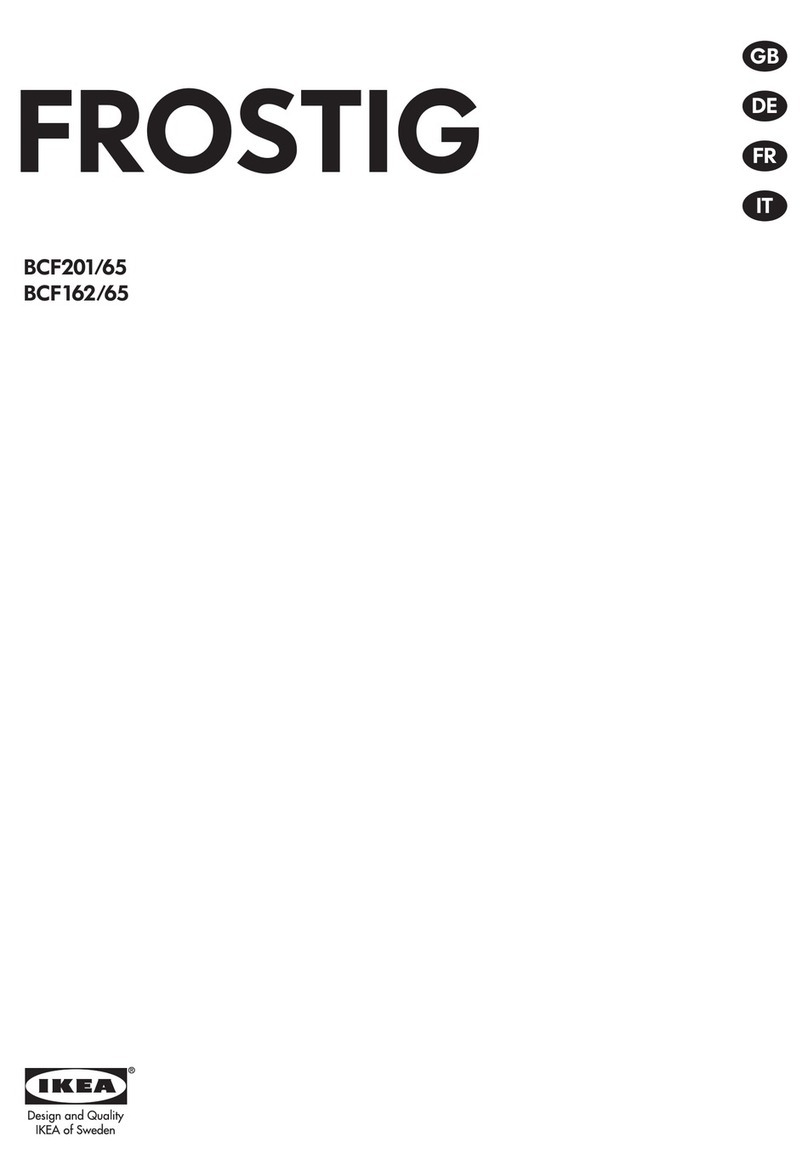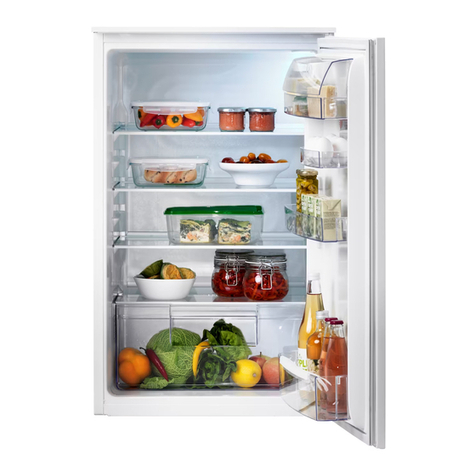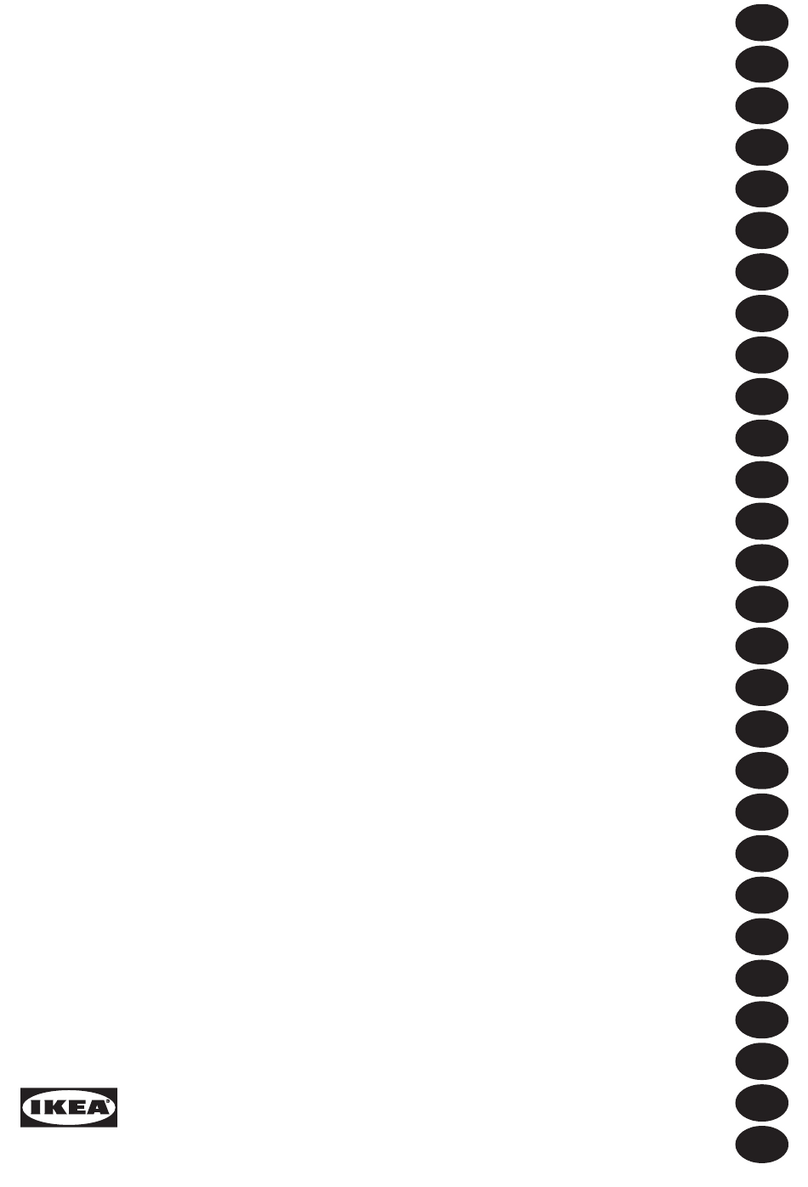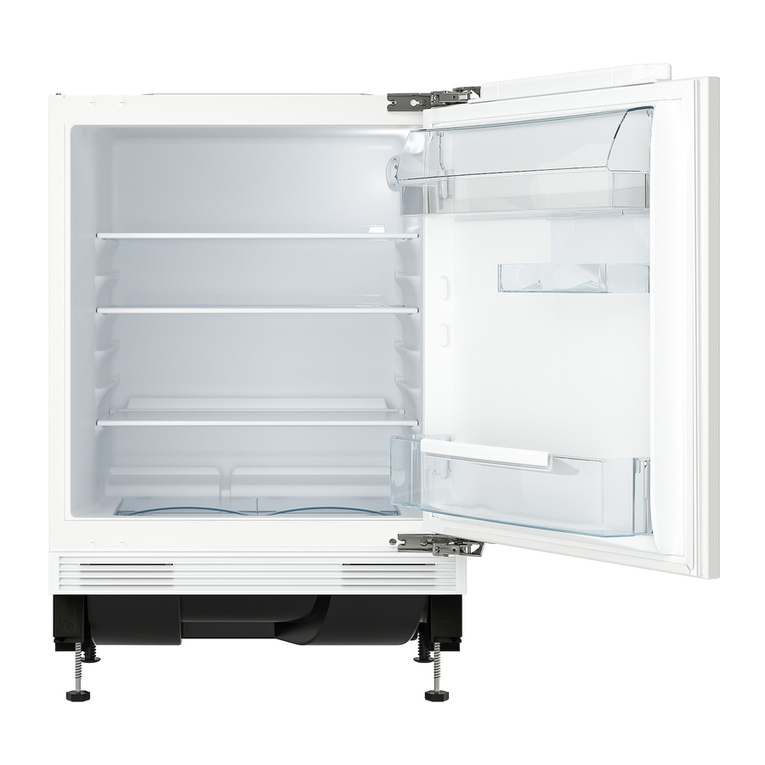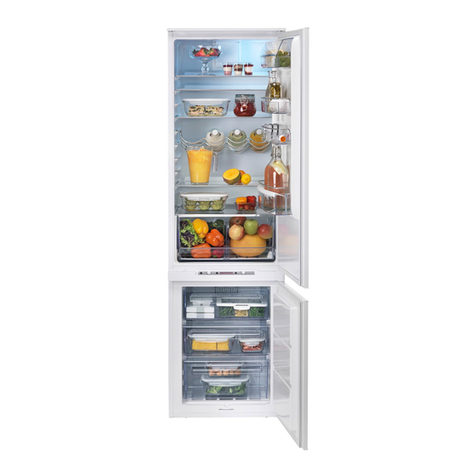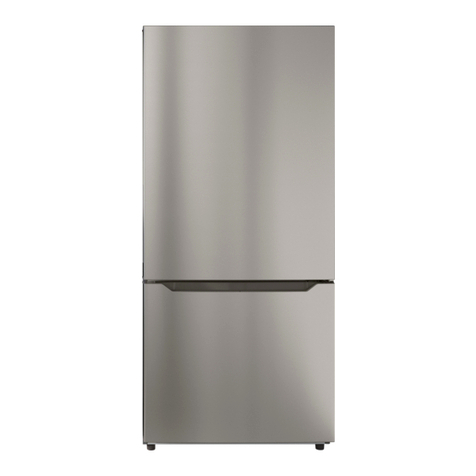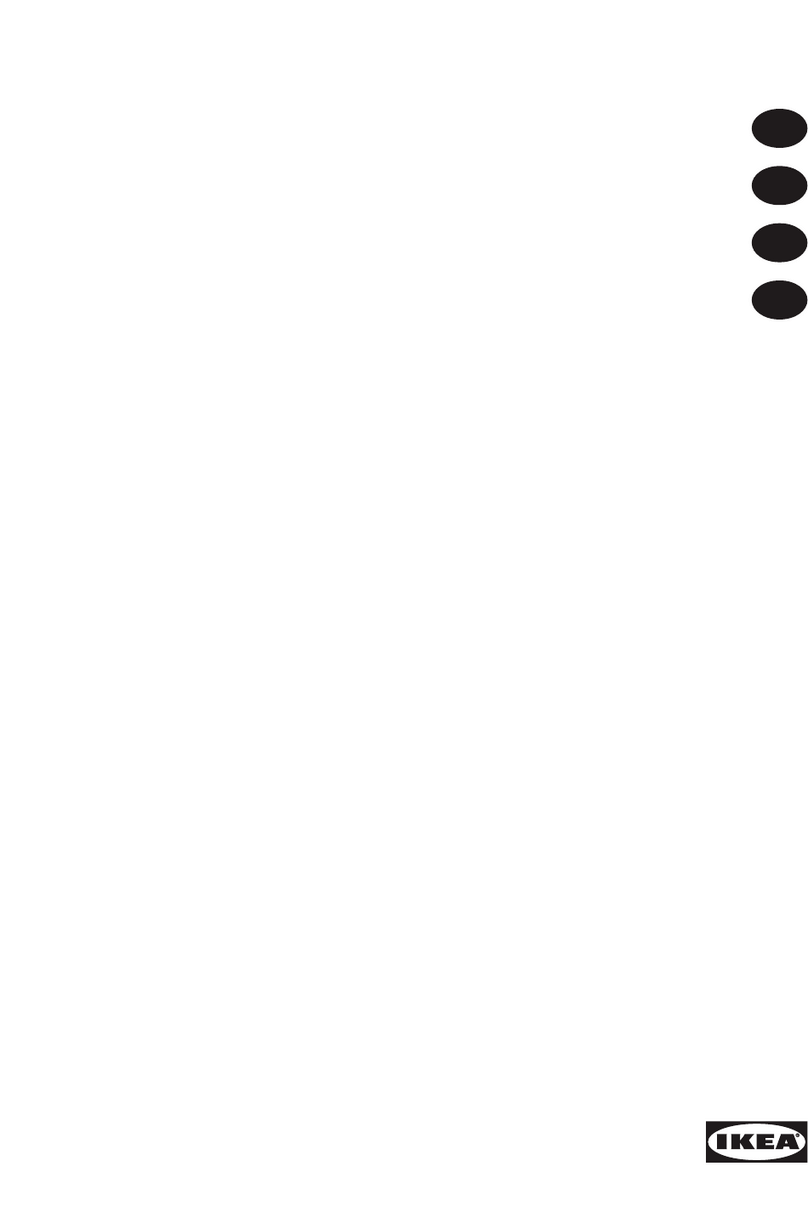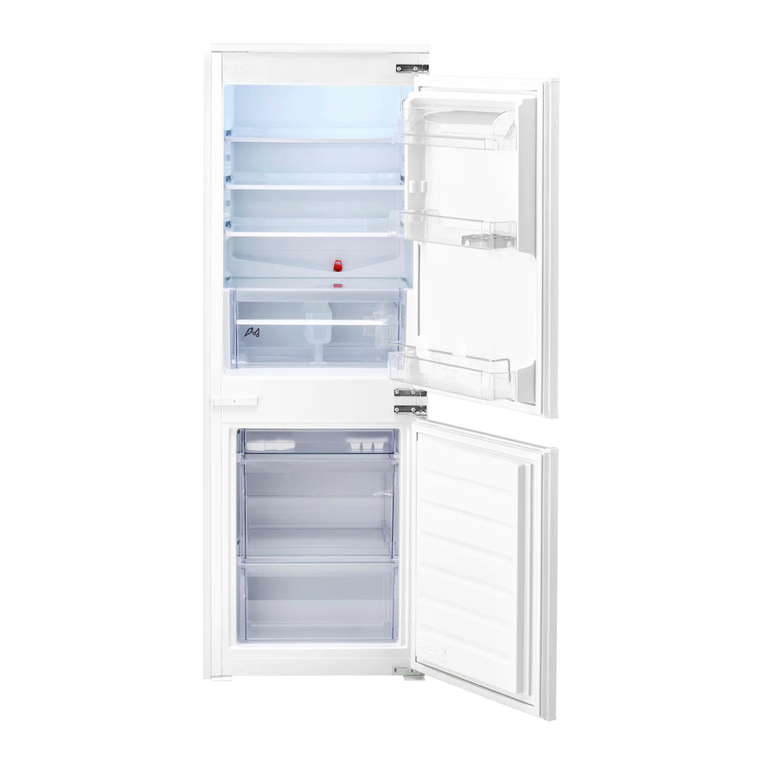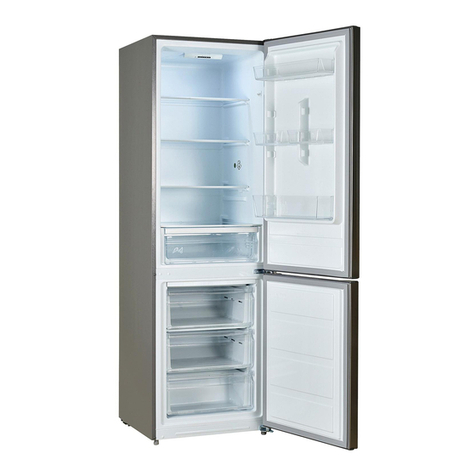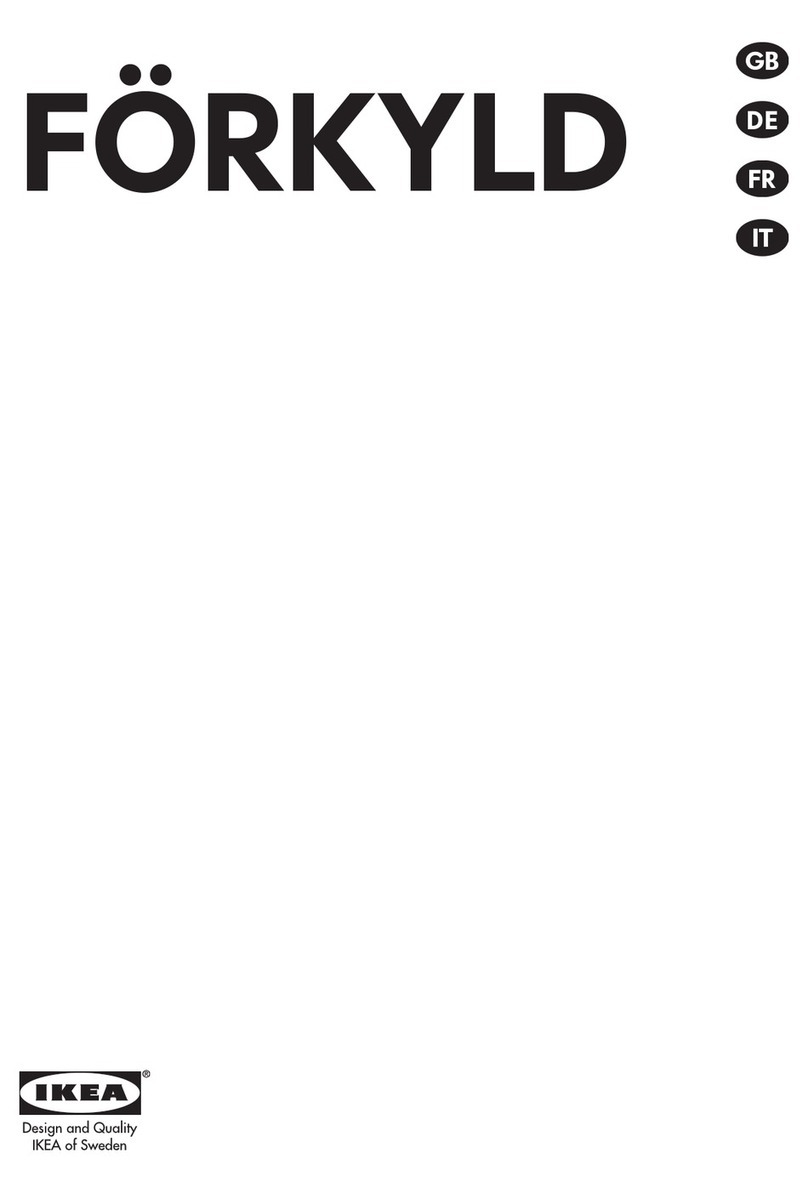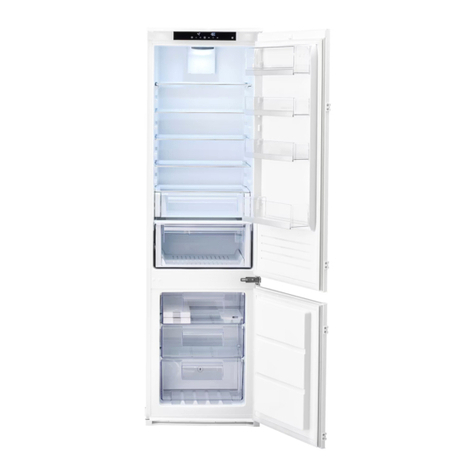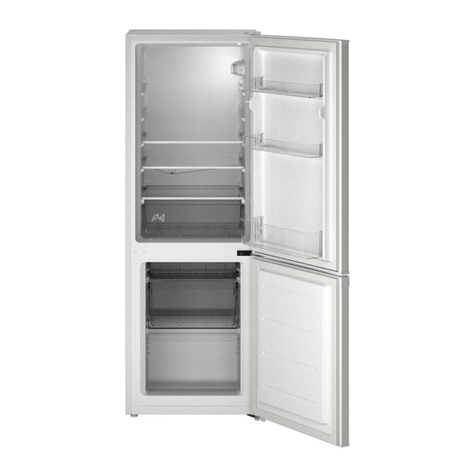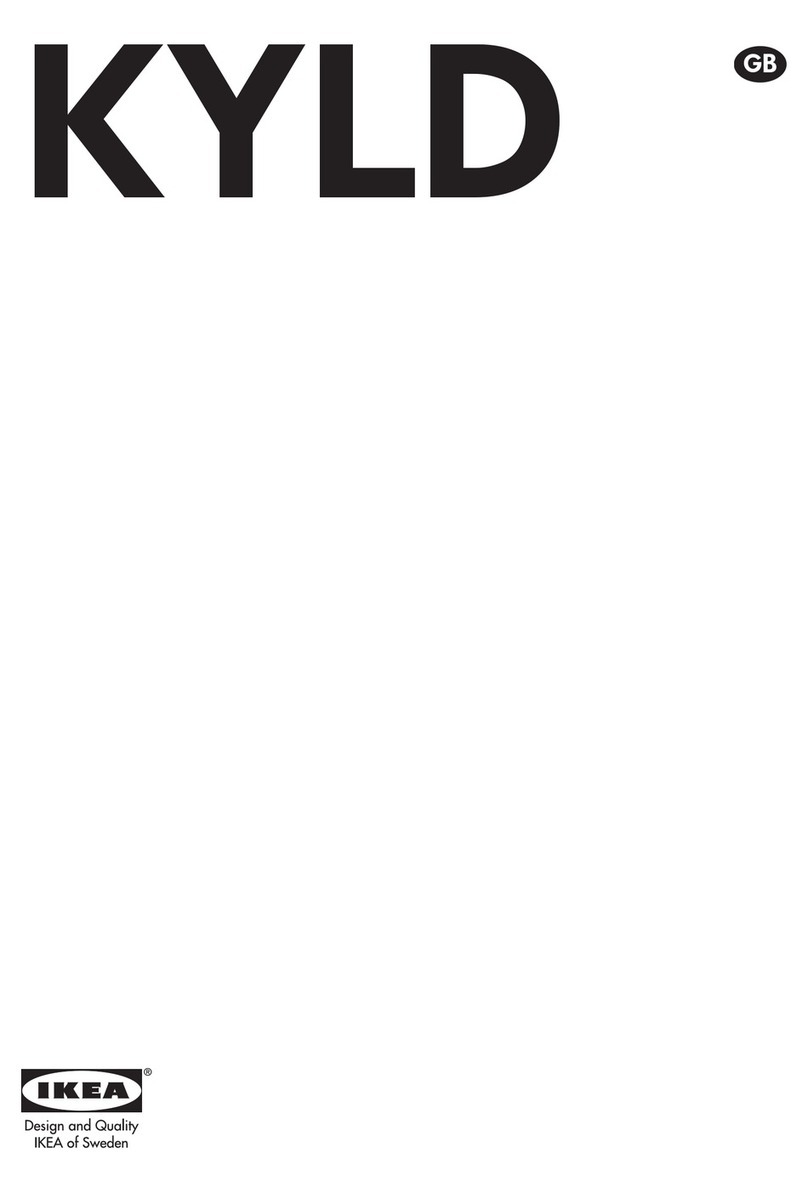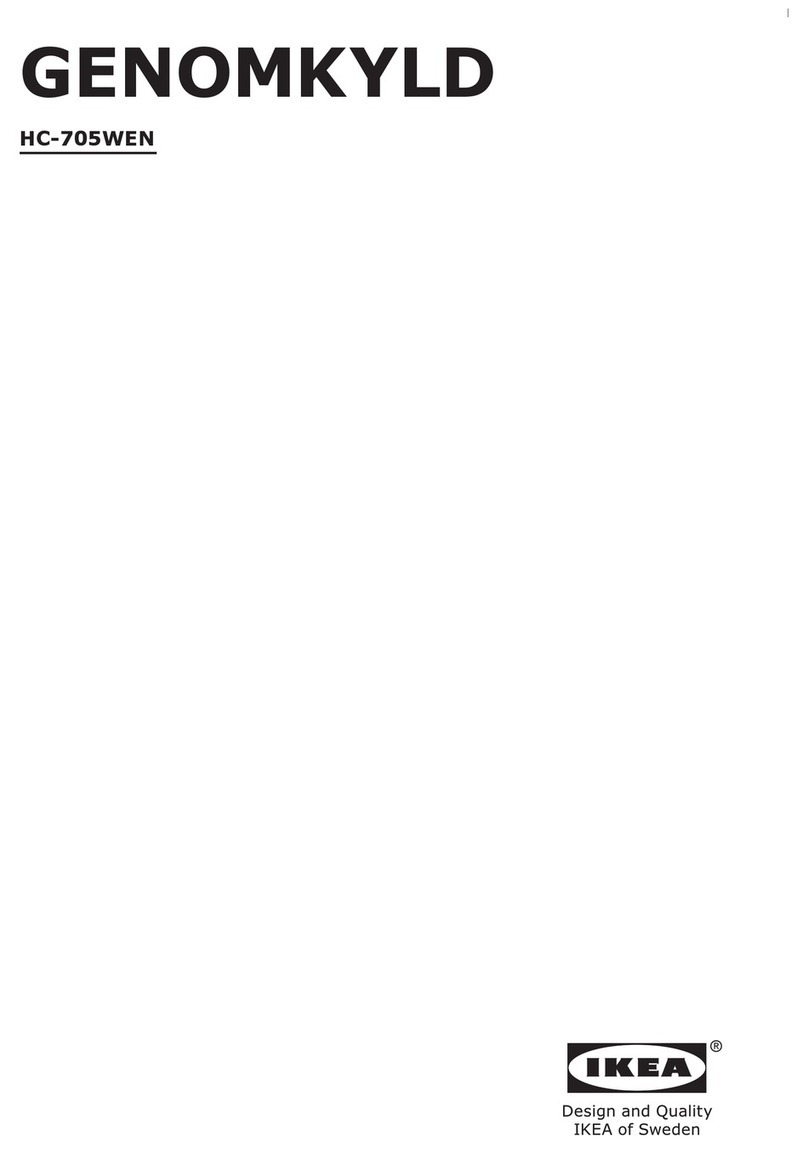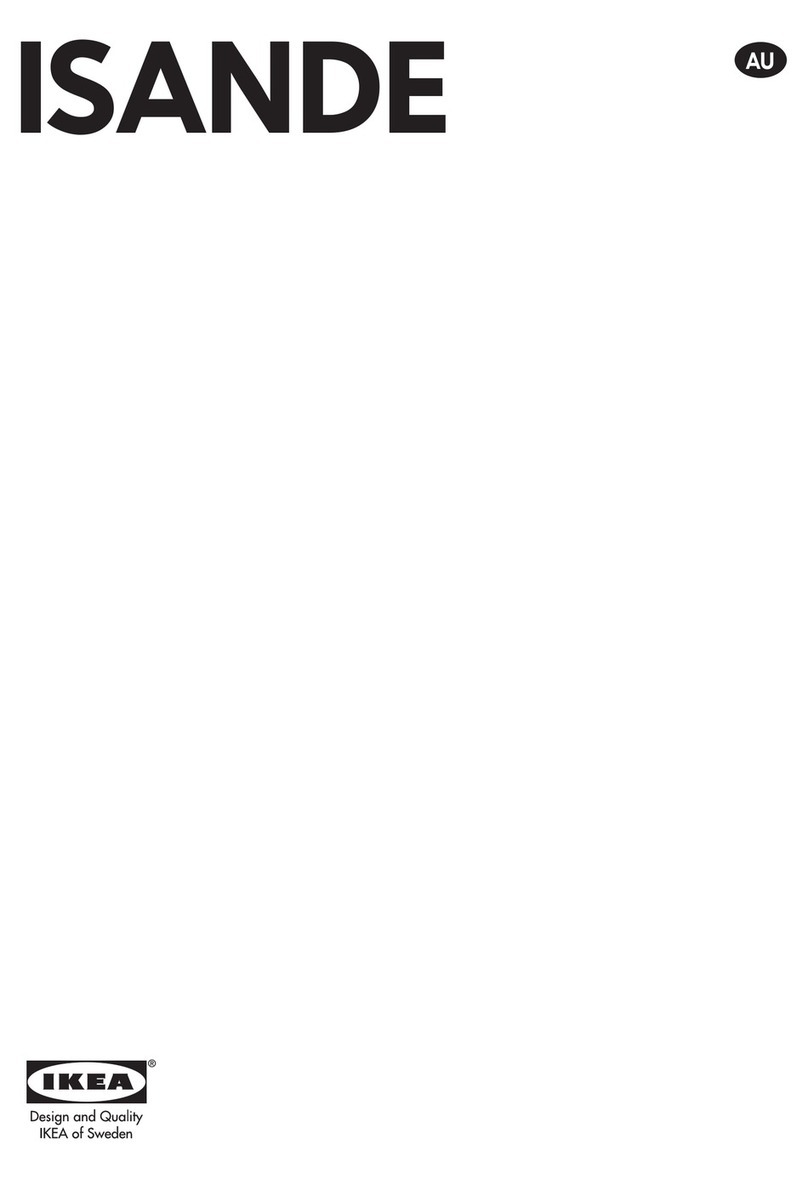
ENGLISH 6
only, with mains water pressure between
0.17 and 0.81 MPa (1.7 and 8.1 bar).
Do not store explosive substances such
as aerosol cans and do not place or use
gasoline or other ammable materials in
or near the appliance.
Do not swallow the contents (non-
toxic) of the ice packs (provided with some
models). Do not eat ice cubes or ice lollies
immediately after taking them out of the
freezer since they may cause cold burns.
For products designed to use an air
lter inside an accessible fan cover, the
lter must always be in position when the
refrigerator is in function.
Do not store glass containers with
liquids in the freezer compartment since
they may break. Do not obstruct the fan (if
included) with food items. After placing the
food check that the door of compartments
closes properly, especially the freezer door.
Damaged gaskets must be replaced as
soon as possible.
Use the refrigerator compartment only
for storing fresh food and the freezer
compartment only for storing frozen food,
freezing fresh food and making ice cubes.
Avoid storing unwrapped food in
direct contact with internal surfaces of
the refrigerator or freezer compartments.
Appliances could have special
compartments (Fresh Food Compartment,
Zero Degree Box,...). Unless dierently
specied in the specic booklet of product,
they can be removed, maintaining
equivalent performances.
C-Pentane is used as blowing agent
in the insulation foam and it is a
ammable gas.
The most appropriate compartments
of the appliance where specic types of
food are to be stored, taking into account
dierent temperature distribution in
dierent compartments in the appliance,
are as follows:
- Refrigerator compartment:
1) Upper area of the refrigerator
compartment & door - temperature zone:
Store tropical fruit, cans, drinks, eggs,
sauces, pickles, butter, jam
2) Middle area of the refrigerator
compartment - cool zone: Store cheese,
milk, dairy food, deli food, yoghurt
3) Lower area of the refrigerator
compartment - coldest zone: Store cold
cuts, desserts, meat and sh, cheesecake,
fresh pasta, sour cream, pesto/salsa,
home-cooked food, pastry cream, pudding
and cream cheese
4) Fruit & vegetable drawer at the bottom
of the refrigerator compartment: Store
vegetables and fruits (excluding tropical
fruits)
5) Chiller compartment: Only store meat
and sh in the coldest drawer
- Freezer compartment:
4 star zone (****) compartment is suitable
for freezing foodstus from ambient
temperature and for storing frozen food
as the temperature is evenly distributed
throughout the entire compartment.
Purchased frozen food has the storage
expiration date stated on the packaging.
This date takes into account the type of
food being stored and therefore this date
should be respected. Fresh food should be
stored for the following time periods: 1-3
months for cheese, shellsh, ice cream,
ham/sausage, milk, fresh liquids; 4 months
for steak or chops (beef, lamb, pork); 6
months for butter or margarine, poultry
(chicken, turkey); 8-12 months for fruits
(except citrus), roast meat (beef, pork,
lamb), vegetables. Expiration dates on the
packaging of foods in the 2-star zone must
be respected.
To avoid food contamination, please
observe the following:
– Opening the door for long periods
can cause a signicant increase of the
temperature in the compartments of the
appliance.
– Regularly clean surfaces that may come
into contact with food and accessible
drainage systems.
– Clean water tanks if they have not been
used for 48 h; ush the water system
connected to a water supply if water has
not been drawn for 5 days.
– Store raw meat and sh in suitable
containers in the refrigerator, so that it
does not come into contact with or drip
onto other food.
– Two-star frozen food compartments
are suitable for storing pre-frozen food,
storing or making ice cream and ice
cubes.
